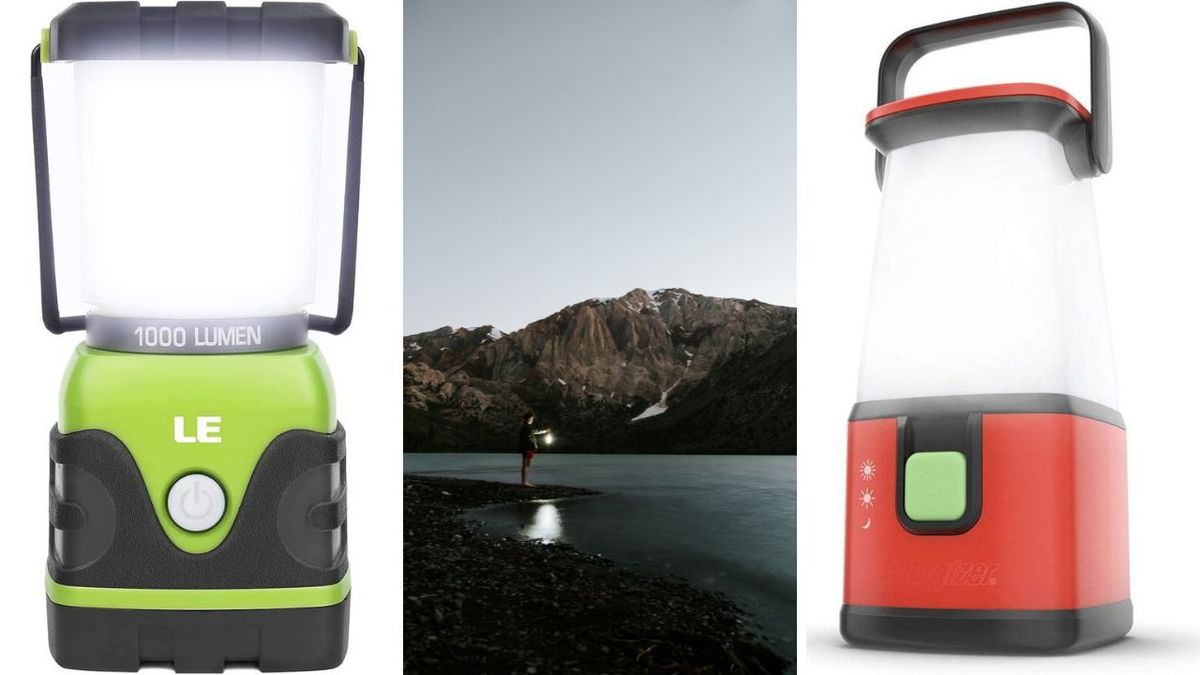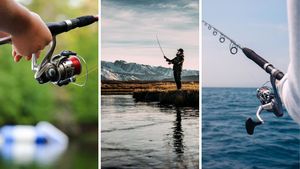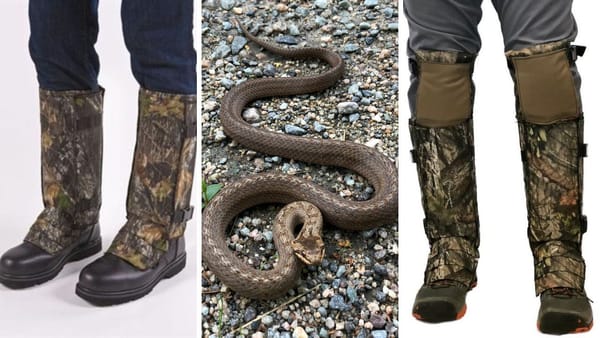Understanding the 20% Rule
The 20% rule is a guideline suggesting that your backpack weight should not exceed 20% of your body weight. This principle is widely accepted within the hiking community as a benchmark for packing, especially for beginners.
The rationale behind this rule is to keep the backpack weight manageable, ensuring that you can hike more comfortably and reduce the strain on your body, thus minimizing the risk of injuries.
For instance, if you weigh 150 pounds, your backpack should not weigh more than 30 pounds. While this might sound simple, achieving this can be challenging, especially when preparing for longer trips where more food, water, and fuel are necessary.
The key is to optimize every item in your pack, focusing on lightweight gear and eliminating unnecessary items.

How to Choose the Right Sleeping Pad for Backpacking
When embarking on a backpacking trip, selecting the right sleeping pad can make or break your night under the stars. A sleeping pad not only provides comfort but also crucial insulation from the cold ground.
Ultralight backpackers often favor air pads or foam pads because they offer a good balance between comfort and minimal weight. Consider the R-value, which measures the pad’s ability to insulate; higher values mean better insulation, which is vital for cold weather trips.
However, comfort doesn't have to mean carrying extra weight. Many manufacturers now offer lightweight versions of their best models, which can significantly reduce your backpacking base weight without sacrificing comfort.
When reviewing options, weigh the benefits against the extra cost. Remember, a well-rested hiker is a happy hiker, so investing in a good sleeping pad can be as crucial as your hiking boots.
How to Select the Best Rain Gear for Backpacking
When you're gearing up for a trek, choosing the right rain gear can make or break your outdoor experience. A good rain jacket not only keeps you dry but also balances breathability with protection.
Most hikers overlook this, but during a downpour, a breathable jacket prevents you from soaking in your own sweat. Look for jackets with vents and made from materials like Gore-Tex, which provide excellent water resistance without turning your hike into a steam room.
Moreover, your entire rain gear ensemble should be lightweight yet durable. Many ultralight backpackers opt for minimalist designs that fold up small enough to fit into side pockets or stuff sacks. Remember, every ounce counts, so evaluate the total weight of the rain gear.
A lighter pack increases your comfort and endurance on the trail. Always test your gear before a long trip to ensure it meets your needs without adding unnecessary bulk.

How to Manage Food Weight for Multi-Day Hikes
When pondering "what is the rule for backpacking?" especially regarding food, water, and fuel, the key is balance. For many, the challenge lies in packing enough calories without overloading.
A common strategy is to plan meals meticulously, focusing on high-energy, lightweight options like dehydrated meals and energy bars. Consider the duration of your trip and the intensity of your activities to determine how much food is necessary.
This approach not only keeps your pack's weight manageable but also ensures you have enough fuel to enjoy the trails.
Moreover, experienced backpackers often recommend repackaging food into single servings to save space and reduce weight. Ditching bulky packaging and opting for zip-lock bags can significantly lighten your load.
Additionally, for those looking to cut even more weight, focusing on nutrient-dense foods that have a high calorie-to-weight ratio can be a game-changer.
Remember, every ounce counts when you're aiming to keep your backpack weigh under control, making these small adjustments can add up to significant weight savings.
How Much Weight Should Your Pack Weigh for a Weekend Trip?
When planning a weekend getaway in the great outdoors, the weight of your hiking backpack can make or break the experience. For those just getting started backpacking, striking the right balance between necessity and comfort is key.
A manageable weight ensures you can enjoy the scenery without being weighed down. Typically, for a two to three-day hike, aiming for a pack that totals around 20-25 pounds is advisable. This includes your essentials like shelter, sleeping gear, and enough food, water, and fuel.
However, every hiker's needs and strengths vary. If you're a lightweight backpacker, you might lean towards an ultralight pack, where every item is scrutinized for its utility and weight.
For beginners, it's crucial to test carry backpacking loads on shorter hikes before committing to longer distances. This practice helps in understanding what feels comfortable and what might be excessive. Remember, the goal is to enjoy the journey, not just endure it.

The Role of Hydration in Managing Pack Weight
When discussing "what is the rule for backpacking" regarding pack weight, hydration plays a pivotal role. Carrying enough water is crucial, yet it significantly increases your pack's weight.
Innovative solutions like using water filters or purification tablets allow backpackers to carry less water and rely on natural water sources. This strategy not only lightens your load but also connects you with the environment more intimately, making every sip feel like a direct link to nature.
Moreover, understanding the balance between sufficient hydration and optimal pack weight is essential for any ultralight backpacker. Techniques such as drinking plenty of water before starting your hike or planning your route around reliable water sources can drastically reduce the weight you carry.
Remember, every liter of water weighs approximately one kilogram, so efficient water management is key to keeping your pack's weight in check while ensuring you stay hydrated.

The Impact of Food Choices on Backpack Weight
Selecting the right food can make a significant difference in how much your gear weighs. For the ultralight backpacker, the goal is to pack high-energy, lightweight, and nutritious foods.
Dehydrated meals, energy bars, and nuts are excellent choices as they offer a high calorie-to-weight ratio. This approach not only makes your pack lighter but also ensures you have enough fuel to sustain your energy levels throughout the hike.
Additionally, planning your meals can help in managing "food water and fuel" efficiently. By calculating the amount of food needed per day and focusing on compact, high-energy foods, you can avoid carrying excess weight.
This planning extends to choosing multi-use items like a small stove that works both for cooking and boiling water, further reducing the need for heavy, bulky gear. Every ounce saved is a step closer to a more enjoyable and less burdensome backpacking experience.
Selecting the Right Stuff Sack for Your Hiking Gear
Choosing the right stuff sack for your hiking gear is like finding the perfect puzzle piece—it needs to fit just right. Stuff sacks are essential for keeping your gear organized and protected from the elements while ensuring your pack's weight remains balanced.
They come in various materials and sizes, each suited for different types of gear. For instance, a waterproof stuff sack is ideal for electronics or clothing, while a compression sack can drastically reduce the volume of your sleeping bag.
Moreover, using stuff sacks efficiently can transform how your loaded pack feels during a hike. By compartmentalizing your gear, you can distribute weight evenly, making your load feel lighter and more manageable.
This is especially beneficial for ultralight backpackers who count every ounce. Experiment with different configurations in your hiking backpack to see what arrangement makes your gear most accessible and your pack easiest to carry. This small step can have a significant impact on your overall backpacking experience.

Selecting Ultralight Gear for Beginners
Embarking on your first few trips as an ultralight hiker can seem overwhelming. The allure of ultralight backpacking lies in its promise of freedom and less strain, but achieving that featherlight pack requires careful gear selection. Start by investing in a lightweight tent, sleeping pad, and backpack.
These are the three heaviest items in your pack, and choosing lighter options can drastically reduce your overall load. It's also wise to scrutinize each item on your gear list, asking yourself whether it's essential.
For those just getting started in backpacking, the temptation to over-prepare is real. However, ultralight backpacking isn't just about buying the most expensive, high-tech gear; it's about learning to eliminate unnecessary items.
For instance, instead of packing extra clothing, opt for versatile pieces that can be layered. Similarly, consider whether you really need camp shoes or an extra pair of socks. By simplifying your gear list and opting for multipurpose items, you can enjoy a lighter pack and a more enjoyable hike.
Essentials of Safety Gear for Every Backpacker
Safety gear is an essential checklist item that should never be compromised to shave off a few ounces from your backpack's weight. Key items include a whistle for signaling, a headlamp or flashlight with extra batteries, and a basic first aid kit tailored to your medical needs and the nature of your trip. These items might seem like they add extra weight, but they are vital for emergency situations.
Additionally, consider the terrain and weather conditions of your destination. For mountainous or rugged terrains, trekking poles can alleviate the stress on your knees and improve your balance.
They might add a bit to the average weight of your pack, but the support they provide can prevent injuries. Always prioritize your safety by preparing for the worst-case scenario while hoping for the best, ensuring a safe and enjoyable backpacking adventure.

Optimizing Food, Water, and Fuel for Your Backpacking Journey
Managing the weight of food, water, and fuel efficiently is pivotal for a successful backpacking journey. For food, consider calorie-dense options that have less weight and take up minimal space in your food bag.
Dehydrated meals are popular among ultralight hikers because they're lightweight and only require adding hot water. Packing a small, efficient stove can help save weight typically taken up by fuel canisters.
Water weight is non-negotiable but carrying capacity can be optimized. Instead of carrying all your water for the day, research your route to identify water sources and plan your refills accordingly.
This strategy not only lightens your load but also ensures you have access to fresh water throughout your hike. Remember, every ounce counts when you're trying to keep your backpacking pack weight manageable.
Practical Tips for Reducing Pack Weight
To effectively apply the 20% rule, start by investing in a lightweight backpack and prioritizing ultralight versions of essential gear such as tents, sleeping bags, and sleeping pads. For example, swapping a standard sleeping bag for an ultralight sleeping system can save significant weight.
Additionally, consider the cumulative impact of small items. Opt for a mini first aid kit instead of a full-sized one, and replace heavy tent poles with lighter alternatives.
Another strategy is to meticulously plan your food supplies. Instead of packing full meal cans, opt for dehydrated meals that only require water. Also, reevaluate your clothing choices; instead of packing extra clothes, choose versatile pieces like an insulated jacket that can serve multiple purposes.
Remember, every ounce counts, and by focusing on lightweight gear and only the essentials, you can significantly reduce your overall weight.

Some Final Thoughts
As an experienced backpacker who has packed hundreds of miles in the Sierra Nevada mountains, take it from me when I say that weight is everything when backpacking.
Like most people, yes, I've overpacked many times and always regret it! Food seems to be one of the items that many people over pack. Careful planning of each meal can usually solve this problem.
Gear is also an important factor. Look for gear that is specific to backpacking(not camping) and get gear that saves room and is light. Clothing should also be well thought out.
In my experience, packing light, breathable clothing is best. But don't forget to plan in case of weather. Without the proper clothing things can go south quickly! Again, plan carefully and go light! Your trip will be so much more enjoyable! Happy Hiking!
FAQ's
Is the 20% rule suitable for all types of backpacking trips?
While the 20% rule is a good starting point, the specific needs of different trips, such as the duration and the environment, might require adjustments. For instance, longer trips or colder weather might necessitate carrying more weight.
How can I measure my pack's weight accurately?
Use a luggage scale to weigh your fully loaded backpack. This will help you make necessary adjustments and ensure you adhere to the 20% rule.
What should I do if my essential gear alone surpasses the 20% limit?
Look for ways to switch to ultralight alternatives. Sometimes, investing a bit more in high-quality, lightweight gear can significantly reduce your pack's weight without sacrificing safety or comfort.
What is the 20% rule in backpacking?
The 20% rule in backpacking refers to the guideline that suggests your backpack should ideally weigh no more than 20% of your body weight. This recommendation helps ensure that your pack is manageable and reduces the risk of strain or injury while hiking.
Why is the 20% rule important in backpacking?
The 20% rule is crucial because carrying a heavy backpack for an extended period can lead to fatigue, discomfort, and even injury. By adhering to this guideline, backpackers can maintain a better balance, agility, and endurance during their trekking adventures.
How do I calculate the weight limit for my backpack using the 20% rule?
To calculate the weight limit for your backpack, simply multiply your body weight by 0.20 (or 20%). For example, if you weigh 150 pounds, your backpack should ideally not exceed 30 pounds (150 * 0.20 = 30). Keep in mind that this is a general guideline, and individual fitness levels and personal preferences may vary.
What should I do if my backpack exceeds the 20% rule?
If your backpack exceeds the 20% guideline, consider reassessing your packing list and prioritizing essential items. Look for opportunities to reduce weight by opting for lighter gear, eliminating non-essential items, and practicing efficient packing techniques. Additionally, consider distributing weight evenly within your pack to minimize strain on your back and shoulders.
Are there exceptions to the 20% rule?
While the 20% rule serves as a helpful guideline, it's essential to recognize that there may be exceptions based on individual circumstances and preferences. Some experienced backpackers may comfortably carry heavier loads, while others may prefer a lighter pack for increased agility and comfort. Ultimately, it's crucial to listen to your body, adjust your pack weight accordingly, and prioritize safety and enjoyment during your backpacking adventures.















Member discussion